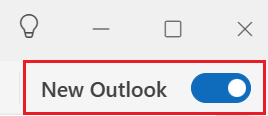Exporter ou sauvegarder mes contacts, mon calendrier, mes emails et mes tâches
Create an Outlook backup file to save and export email messages, contacts, calendar info and tasks. Then import your backup to a new email plan, email service or a new version of Outlook. The export won’t include meta-data such as folder properties (views, permissions and AutoArchive settings), message rules and blocked sender lists. Please note that Microsoft no longer supports versions of Outlook older than 2016.
Sélectionnez l’onglet approprié en fonction de la plate-forme de messagerie que vous utilisez.
- Connectez-vous à Outlook sur le Web. Utilisez votre adresse email et votre mot de passe Microsoft 365 (votre nom d’utilisateur et votre mot de passe GoDaddy ne fonctionneront pas).
- Sélectionnez
 Personnes tout à gauche de la page.
Personnes tout à gauche de la page. - Sélectionnez Gérer les contacts, puis Exporter les contacts.
- Choisissez si vous voulez exporter tous les contacts ou uniquement les contacts d'un dossier spécifique, puis sélectionnez Exporter.
Your contacts will be saved as a .csv file, which you can import to other email apps (like Gmail) or other versions of Outlook.
- Ouvrez Outlook.
- If you’re in new Outlook, revert to classic Outlook. In the upper-right corner, turn off the New Outlook toggle. You might have to confirm that you want to revert.

- En haut à gauche, sélectionnez Fichiers.
- Sélectionnez Ouvrir et exporter, puis Importer/Exporter.
- Sélectionnez Exporter vers un fichier, puis Suivant.
- Sélectionnez Fichier de données Outlook (.pst) puis ,Suivant.
- To export the entire mailbox, select the name of the email account, and then continue to the next step. Or, to only export your calendar, contacts or tasks, select the folder you want to export. You can only export 1 type at a time, so you must repeat these steps to export contacts, calendars and tasks individually.
- Next to Include subfolders, make sure the checkbox is selected, and then select Next.
- To choose where to save the Outlook Data File (.pst), select Browse. Enter a file name, and then select OK.
- If you're exporting to an existing Outlook Data File (.pst), under Options, specify what to do when exporting items that already exist in the file.

- Sélectionnez Terminer.
- The export begins immediately unless 1 of the following scenarios apply:
- When the Create Outlook Data File dialog appears, enter a password in Password and Verify Password, and then select OK. Otherwise, to continue without setting up a password, leave the password fields blank, and then select OK.
- If you're exporting to an existing Outlook Data File (.pst) that's password protected, in the Outlook Data File Password dialog, enter the password, and then select OK.
- Ouvrez Outlook.
- If you're in the new version of Outlook, revert to the legacy version of Outlook. Select Outlook, and then Legacy Outlook. You might have to confirm that you want to revert.

- Sélectionnez Fichier, puis Exporter. La fenêtre Exporter vers un fichier archive (.olm) s’ouvre.
- If you don't see Export, select Tools, and then Export instead.
- Select what you want to export. By default, all items are selected.
- To export any of these types individually, select the checkbox next to each item.

- Sélectionnez Continuer.
- Choose where on your computer you'd like to save the file, enter a file name, and then select Save. Your items will be exported.
- Sélectionnez Terminer.
Étape connexe
- Maintenant que vos données Outlook sont exportées dans un fichier de sauvegarde, vous pouvez les importer dans Outlook.
En savoir plus
- Find out how to export a calendar to a .ics file from Microsoft.
- Vous trouverez plus d’informations sur l’exportation et l’importation de fichiers dans Outlook auprès de Microsoft.
- Check out this article from Apple to learn how to import or export mailboxes in Apple Mail on Mac.